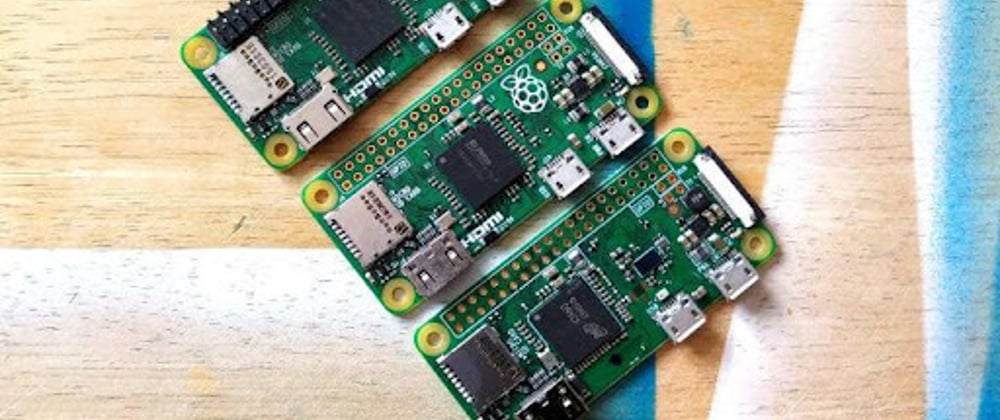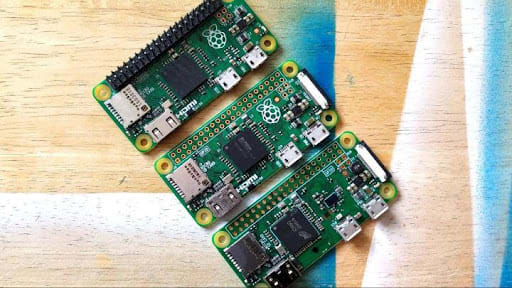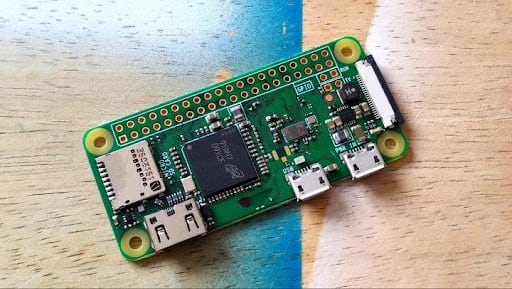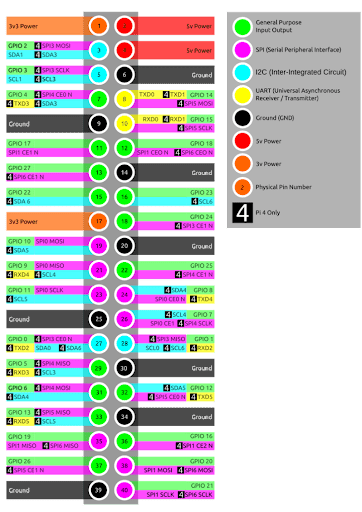The Raspberry Pi Zero is a device the dimensions of a piece of gum that is intended to be as inexpensive as conceivable, commencing at $5. It is sufficiently compact to be incorporated in a work and sufficiently affordable to be retained. It operates the identical Pi OS and applications as bigger Pis, albeit the tiny PCB is unable to operate the current, 64-bit variant of the OS. Even though it just possesses one core, it possesses sufficient processing capacity for getting the work completed.
You ought to possess a Pi Zero amongst your parts basket regardless of your fascination in the Pi. We would be addressing the majority of the basics concerning the Pi Zero.
Specs for the Raspberry Pi Zero
The Raspberry Pi Zero comes in 3 different versions, but they all possess the similar CPU and 512MB RAM. The Broadcom BCM2835 SoC ARM11 32-bit CPU utilized in the initial Pi 1 was already superclocked to 1 GHz. Wireless assistance and assistance for camera parts are the sole distinctions among the SKUs.
Some of the other characteristics:
- It possesses a RAM of 512MB for storage.
- It possesses 40 GPIO Pins.
- It possesses a CSI camera connector, although it is not available on the version 1.2.
- It weighs about 0.31oz and that is equivalent to 9g.
Reasons for Purchasing Raspberry Pi Zero
You could see that it is of 3 variants, however only 2 are currently available.
Raspberry Pi Zero W: Undoubtedly the finest option, although possessing an MSRP of $10, this variant integrates Wi-Fi and Bluetooth connection, making it somewhat quite pricey than the initial Pi Zero variant that was launched.
Raspberry Pi Zero (version 1.3): The latest Pi Zero variant lacks wireless connection but possesses a low MSRP of $5, making it appealing for a task wherein you would not require internet access or could link it to a PC via USB.
Raspberry Pi Zero (version 1.2): It lacks the CSI camera port that the Pi Zero 1.3 or W include. This variant was discontinued, therefore you would not find it for purchase anymore.
All 3 variants have identical structures, dimensions, and HDMI/USB connections, thus the Pi Zero W ought to be your sole option whenever you are looking for your starter PCB.
Raspberry Pi Zero Trade-Offs
Certain things are available for one to keep in mind while considering the Pi Zero. One ought to perform certain sacrifices to conserve cash and space above a complete Pi 4.
Because it possesses only 1 micro USB connector for information, we must utilize a USB hub or Bluetooth accessories to link external parts.
Carry your personal pins: It does not possess pre-soldered GPIO, but you may get pre-soldered units for a fee in certain retailers. You could discover various solderless methods for connecting pins.
Suppose you wish to utilize a Pi camera feature, you would require unique camera cords.
This PCB is among the select gadgets that utilizes tiny HDMI. Suppose one hopes of getting a monitor linked to it, you would require a tiny HDMI cable.
Making a Raspberry Pi Zero to Work
Starting up by utilizing a Pi Zero is much like starting up with every other Pi. Sadly, the 64-bit variant of Pi OS is not available; rather, you ought to utilize the 32-bit variant. The 32-bit variant is currently the standard, whereas the 64-bit variant, that tends to appear and seem identical, is mainly for 8GB Pi 4 machines.
Most users make a frameless setup of the Pi OS, meaning they could manage the Pi Zero directly via SSH or VNC, to bypass the inconvenience of putting in a different sort of external gadget. Suppose you possess a Pi Zero, you could plug it into a PC's USB port and manage it from there with the Pi utilizing your laptop's Internet connection. Try adding dtoverlay=dwc2 under /boot/config.txt and modules-load=dwc2,g ether to /boot/cmdline.text after the term rootwait to achieve this.
Incorporating GPIO Pins
The Pi possesses forty GPIO pins that allow it to begin associating with circuits and add-on PCBs. As opposed to the earlier Pi variants, it does not possess pre-soldered GPIO.
It is easy to incorporate your personal GPIO header pins if you know how to solder. Or else, there are several options that utilize unique header pins that are "whacked" into position by maneuvering.
The header pins are intended to be pounded in position, delicately pressing into the Pi Zero's slots and latching in position.
Whenever you solely require linking some GPIO or pogo pins, are fast and easy methods to link them.
The GPIO is amongst the crucial Pi parts, specifically for the Pi Zero. They provide access to the SoC that could be utilized for managing and associating with electrical parts.
Utilizing of HATs
Notwithstanding the obvious dimension variation amongst the HAT and Pi Zero, it possesses the identical forty pin GPIO like prior variants, so it is suitable for utilization alongside the majority of the HAT PCBs. Only certain exceptions exist in terms of compatibility.
One could discover complementary PCBs made specifically for Pi Zero that are also suitable for utilization alongside the other Pi variants. The “pHAT” series of PCBs are made to fit the Pi Zero's frame. Although HAT is a recognized acronym, pHAT is not. Although the actual title is uHAT, pHAT is the widely utilized moniker.
We view the most innovative ideas in the HAT / pHAT environment. One could discover numerous PCBs for distinct tasks irrespective of their complexity. Everyone of it gets linked to the GPIO and gives additional functionality for our applications.
Conclusion
The Pi Zero is perfect for integrated applications thanks to its affordability and small size. This little device has sufficient capacity to run your program, analyse the outcomes, and get them submitted for further study. By attaching a Pi Zero W and executing a certain basic program, antiquated machinery could be repurposed into WiFi computing accessible to every of your gadgets.










Top comments (0)